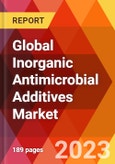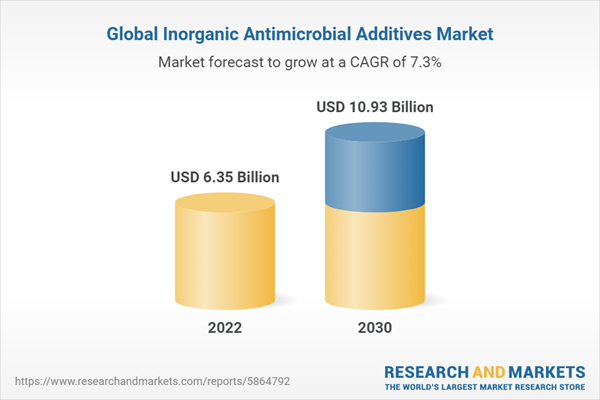The global Inorganic Antimicrobial Additives market was valued at US$ 6.35 Billion in 2022 and is projected to reach US$ 10.93 Billion by 2030, expanding at a Compound Annual Growth Rate (CAGR) of 7.29%.Prospects of Growth in the Global Inorganic Antimicrobial Additives Market: Poised to Reach US$ 10.93 Bn by 2030 with a CAGR of 7.29%
Growth Influencers:
The market's growth is mainly driven by an increase in consumer awareness about health-related issues and the wide application of these additives across multiple industries due to technological and product innovation. These antimicrobial additives are extensively used in sectors such as healthcare, packaging, and food & beverage due to their effectiveness in preventing microbial growth. However, fluctuating raw material prices pose a significant challenge to the market's growth, causing uncertainty in production costs and affecting profit margins.Segment Overview:
The market is segmented by Type, Application, and End-user.By Type
- Silver
- Copper
- Zinc
By Application
- Plastic
- Paints & Coatings
- Pulp & Paper
- Others
By End user
- Healthcare
- Packaging
- Food & Beverage
- Construction
- Automotive
- Consumer Goods
- Textiles
- Other
Regional Overview:
The report comprehensively covers the Ground Fault Monitoring Relays market in various regions including North America, Europe, Asia Pacific, Middle East & Africa, and South America.North America
- US
- Canada
- Mexico
Europe
- Western Europe
- UK
- Germany
- France
- Italy
- Spain
- Rest of Western Europe
- Eastern Europe
- Russia
- Poland
- Rest of Eastern Europe
Asia Pacific
- China
- India
- Japan
- Australia & New Zealand
- South Korea
- ASEAN
- Rest of Asia Pacific
Middle East & Africa
- Brazil
- Argentina
- Rest of South America
South America
- UAE
- Saudi Arabia
- South Africa
- Rest of MEA
Competitive Landscape:
The global Inorganic Antimicrobial Additives market is fairly competitive with the cumulative market share of the seven major players, including BASF SE, DuPont De Nemours, Microban International, Sanitized AG, LyondellBasell, Avient Corporation, and Biocote, being between 25-35%. Other notable market contributors are Milliken Chemical, Dow Inc., Clariant AG, Lonza, Plastics Color Corp., Biosafe Inc., and other prominent players.Report Insights:
- The Inorganic Antimicrobial Additives market is projected to grow at a CAGR of 7.29% from 2023 to 2030.
- Key drivers include growing health awareness among consumers and product innovation.
- The Copper and Zinc segments and the Healthcare sector are expected to witness notable growth.
- North America holds a significant market share, while Asia Pacific is expected to grow at the fastest rate.
Questions to be Answered:
- What is the estimated growth rate of the global Inorganic Antimicrobial Additives market?
- What are the key growth drivers and potential restraints?
- Which market segments are expected to witness the most growth?
- Who are the leading players in the market?
Table of Contents
Companies Mentioned (Partial List)
A selection of companies mentioned in this report includes, but is not limited to:
- BASF SE
- DuPont De Nemours
- Microban International
- Sanitized AG
- LyondellBasell
- Avient Corporation
- Biocote
- Milliken Chemical
- Dow Inc.
- Clariant AG
- Lonza
- Plastics Color Corp.
- Biosafe Inc.
Table Information
| Report Attribute | Details |
|---|---|
| No. of Pages | 189 |
| Published | June 2023 |
| Forecast Period | 2022 - 2030 |
| Estimated Market Value ( USD | $ 6.35 Billion |
| Forecasted Market Value ( USD | $ 10.93 Billion |
| Compound Annual Growth Rate | 7.2% |
| Regions Covered | Global |









